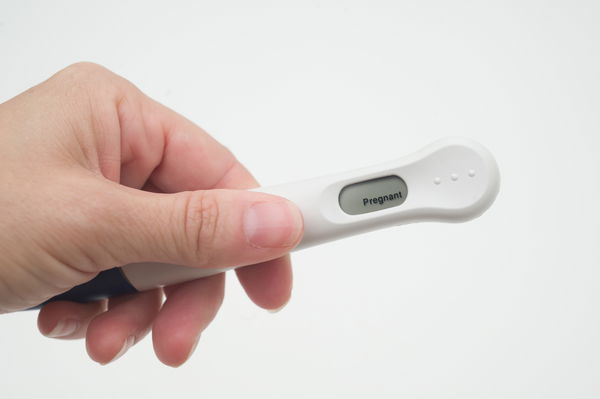Highlights
- Economic cycles may explain a lot about childbearing choices, but understanding these choices in a pandemic-disrupted world requires more than just an economic lens. Post This
- Research is turning to social factors and policy that can support fertility in a world beset by uncertainty. Post This
- Communities where social trust was low still had fertility that was resilient to uncertainty if they also had a strong child care infrastructure. Post This
The global pandemic has accelerated research on the connection between uncertainty and fertility. Even the way we think about uncertainty is much broader than it used to be.
In the past, the relationship between prosperity and fertility was clearly negative: most developed countries had the lowest fertility rates, and the largest families were found in the least developed countries. Then, the post-WWII baby boom led Richard Easterlin to complicate the negative relationship between income and fertility at the national level with his relative income hypothesis—the idea that it isn’t income that determines how many children people have, but rather their income during their childbearing years relative to household income in late childhood. Easterlin reasoned that late childhood is when perceptions of adulthood coalesce. So those who were ages 10 to 14 when the Great Depression was ending around 1939 had a cognitive schema telling them that providing for a family was difficult and precarious, but they entered adulthood when WWII ended, so their social reality was of an economy starting to boom and plentiful jobs. No wonder, then, that they readily embarked on the journey of parenthood. It seemed a relatively easy task compared to what they had anticipated.
But Easterlin’s emphasis on income relative to expectations receded somewhat in the late 20th century. The post-WWII baby boom had been entirely unexpected—so much so that many initially thought it was fueled only by war-delayed childbearing and would fizzle out in a year or so (it actually lasted 14 years). With the benefit of hindsight, the baby boom can be understood as an extreme example of what economists call pro-cyclical fertility, the pattern where fertility rates rise and fall with economic fortunes. The emphasis on personal perceptions of prosperity became a nuance in fertility narratives, rather than a headline.
Nonetheless, attempts to understand below replacement fertility in most post-industrial countries have started to recognize that more than economic hardship separates the “lowest low” fertility of Eastern Europe from the merely low fertility of Western Europe. Eastern European biographies include upheaval, not just deprivation. The word “precarity” has entered the vocabulary as fertility theorists have used it to draw attention to not only precarious circumstances, but to a state of being uncertain. Precarity means that even when you have a good job and a good marriage, you don’t take the future of those things for granted.
Recent research from Norway substantiates that people's fertility intentions are indeed shaped by their subjective view of the future economic situation. Specifically, in 2022, Trude Lappegård and her colleagues published results in the Journal of Marriage and Family from a social experiment they conducted right before the pandemic (fall 2019). Participants that were randomly assigned to read a negative future economic scenario expressed lower fertility intentions than a control group that did no reading before being asked about future childbearing plans. Those randomly assigned to read a positive future economic scenario came out intending to have more children than the control group. The authors argue that subjective narratives of economic uncertainty—not just objective constraints—have a significant role in fertility decision-making. One of Lappegård’s coauthors, Daniele Vignoli, has similar work with another collaborator showing that the debt crisis has also dampened fertility by increasing perceived uncertainty.
This kind of research has made it clear that incorporating uncertainty means going beyond current economic situations and including perceptions of the future. In that vein, Wendy Manning, Karen Guzzo, Monica Longmore, and Peggy Giordano’s work based on survey data and published earlier this year in the Vienna Yearbook of Population Research underlines the importance of uncertainty while also nuancing it. The research team was surprised to find that economic factors, like losing a job, did not directly influence the desire to avoid pregnancy early in the pandemic. However, it did not surprise the authors to find that other indicators of uncertainty—health and relational uncertainties—strongly dampened fertility intentions. They argue that “traditional theoretical approaches focusing on planned behaviors may not be relevant during periods characterized by substantial uncertainty.” In other words, a cognitive schema that says embarking on parenthood requires a job might result in many employed individuals refraining from childbearing if they are unsure about their future health or future partnership. Economic cycles may explain a lot about childbearing choices, but understanding these choices in a pandemic-disrupted world requires more than just an economic lens.
This same idea is well reflected in the title of other recent works, such as “Beyond the economic gaze: Childbearing during and after recessions in the Nordic countries” (Chiara Comolli and colleagues), and “Fertility Decline, Fertility Reversal and Changing Childbearing Considerations in Sweden: A turn to subjective imaginations?” (Gerda Neyer and colleagues). Comolli et al. endeavor to explain why fertility in Nordic countries continued to fall after the Great Recession of 2008–2009, exploring why fertility ceased to be pro-cyclical during the pre-COVID economic recovery. Their discussion calls attention to the state, crisis management, and perceptions of economic and welfare uncertainty. Again, the conclusion is that uncertainty cannot be measured by the strength of the economy alone. Neyer et al. also add that the anti-cyclical fertility decline during the post-recession economic recovery came to a halt in Sweden during the pandemic. They conjecture
that Swedish fertility developments may reflect a ‘subjective turn’ in childbearing considerations. The decision to have children seems less determined by factual circumstances and more by perceived (un)certainties and subjective imaginations of the future.
There is another theme in Neyer’s work, namely that a lack of trust in institutions causes hesitancy about parenthood, which is further substantiated by Arnstein Aassve, Marco Le Moglie, and Letizia Mencarini in a Population Studies’ article about fertility in Italy. The scholars find that fertility in communities with more social trust was less dampened by pervasive uncertainty. Further, they show that public policy could “substitute” for social trust in buffering the negative impact of uncertainty on fertility: communities where social trust was low still had fertility that was resilient to uncertainty provided that they also had a strong child care infrastructure.
Easterlin opened the door on subjective perceptions when he introduced the concept of income in adulthood relative to late childhood. More recently, Lappegård, Vignoli, and colleagues establish that broader influences than personal history affected subjective economic perceptions prior to the pandemic. Manning and colleagues use pandemic-induced change to add that perceptions of non-economic resources that support childbearing matter, and Comolli and colleagues clarify that “personal” perceptions of both economic and noneconomic uncertainty are influenced by states and policy. Finally, Neyer et al. broaden the lens still further when they suggest that Swedish fertility may have become even more dependent upon “subjective imaginations” during the pandemic. Now research is turning to social factors and policy that can support fertility in a world beset by uncertainty. I can’t imagine a more appropriate turn given the potential fertility impact of the next pandemic (or its epsilon variant).
Laurie DeRose is a senior fellow at the Institute for Family Studies, Assistant Professor of Sociology at the Catholic University of America, and Director of Research for the World Family Map Project.














